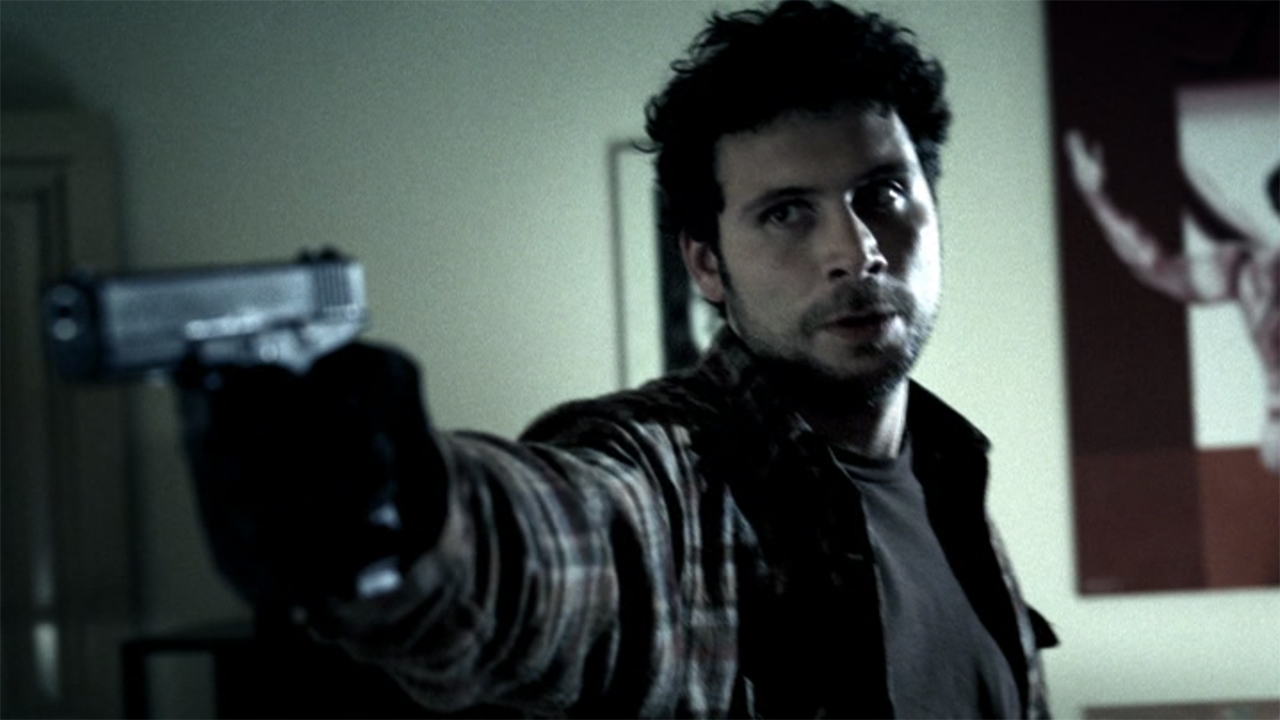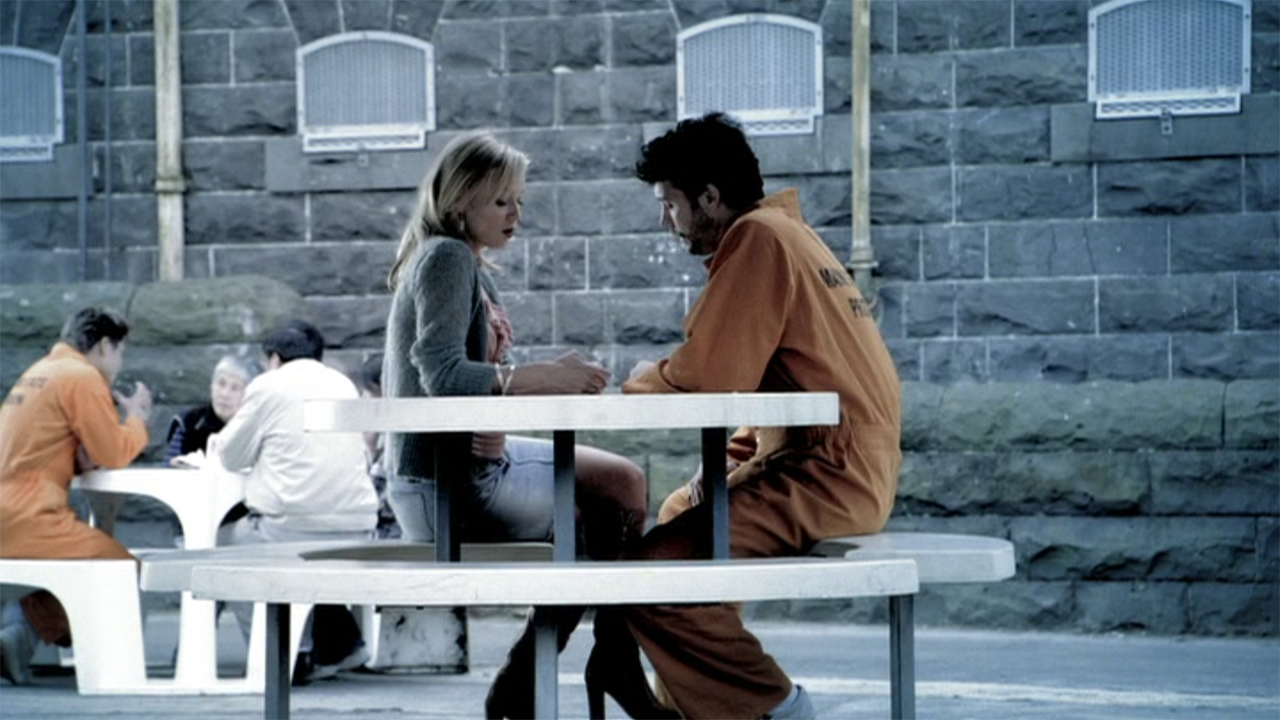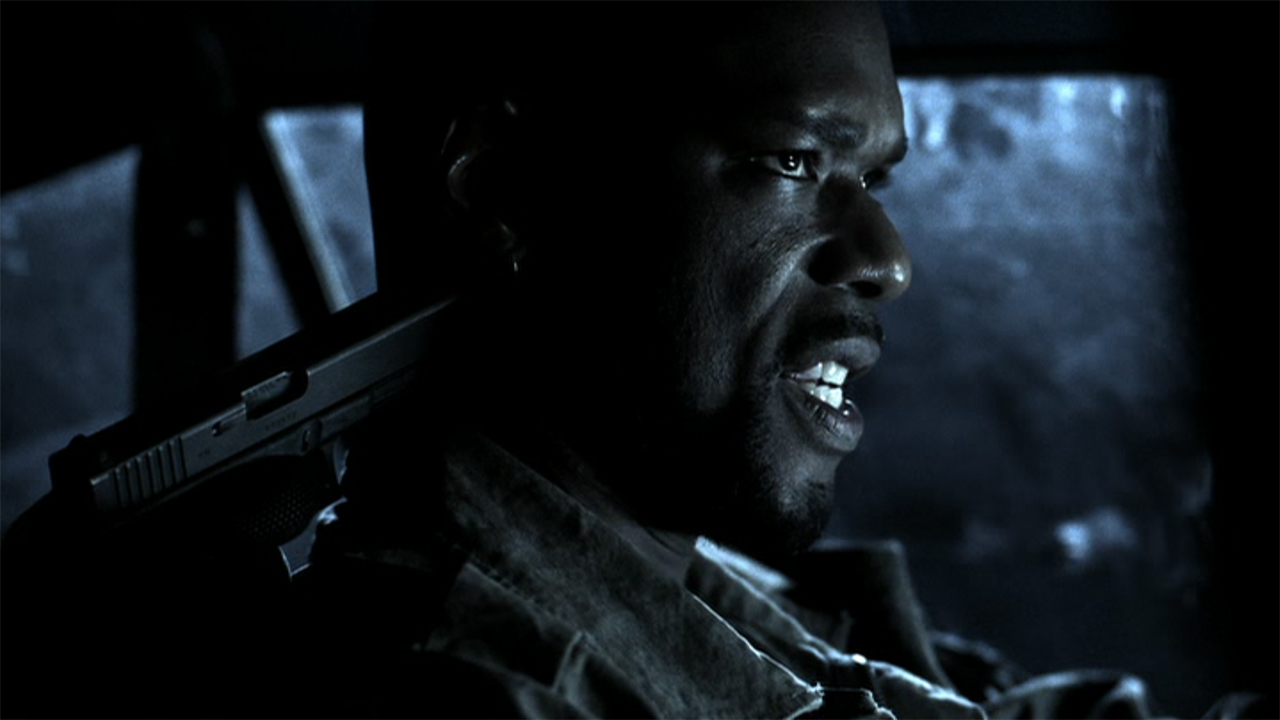Adapting Stephen King's The Fifth Quarter: Nightmares & Dreamscapes' Sixth Episode Is A Different Flavor For The Horror Anthology
Starring Jeremy Sisto and Samantha Mathis.

While other genres are certainly stirred into the mix, Nightmares & Dreamscapes: From The Stories Of Stephen King is primarily a horror anthology series. “Battleground” and “Umney’s Last Case” execute familiar action and film noir tropes, but it’s the terror experienced by the respective protagonists that drive the narrative – and “Crouch End,” “The End Of The Whole Mess,” and “The Road Virus Heads North” make no effort to disguise their effort to freak audiences out (as I’ve noted in this column, some are more effective than others).
“The Fifth Quarter,” aired as the sixth episode of the show following the premiere of “The Road Virus Heads North,” is the sole exception to this broad genre categorization. Its inclusion, it could be argued, is somewhat representative of the diversity in Stephen King’s writing, which is far less about monsters and gore than wide audiences give him credit for. It’s not precisely a “Dreamscape” while all of the other episodes are “Nightmares;” it’s a crime thriller.
The show enlisted a writer with experience in the genre to pen the teleplay, hiring Night Moves and Rob Roy screenwriter Alan Sharp – and Rob Bowman, who helmed the phenomenal “Umney’s Last Case,” was put in the director’s chair for his second Nightmares & Dreamscapes episode. Jeremy Sisto, who was fresh off his role in the hit HBO series Six Feet Under, stars as Willie Evans (a protagonist renamed from the short story), and Samantha Mathis makes her second appearance in a Stephen King adaptation following her role as Susan Norton in the miniseries remake of Salem’s Lot.
The episode marks a nice change of pace for Nightmares & Dreamscapes, but it’s also one of the more middling installments of the anthology’s eight-part run. That’s partially because of choices that deviate and add to the King story, but also because of the source material itself. I dig into all of that in this week’s Adapting Stephen King.

What “The Fifth Quarter” Is About
“The Fifth Quarter” was first published in the April 1972 issue of Cavalier, but it was a strangely natural fit for the Stephen King collection Nightmares & Dreamscapes, which was first published in 1993. Among the 24 tales published in the omnibus, a number of them are experiments by King to dabble in the recognizable voices of other genre authors. As noted in the last few installments of this column, “Crouch End” is an ode to H.P. Lovecraft, and “Umney’s Last Case” is penned in the style of Raymond Chandler. The book also includes a Sherlock Holmes story that the author wrote called “The Doctor’s Case.”
As for “The Fifth Quarter,” the voice Stephen King uses is technically original, but it’s still foreign. In the “Notes” section of Nightmares & Dreamscapes, he doesn’t detail the origins of the story, but instead simply credits it to Richard Bachman (the pen name he used to publish The Running Man and Thinner, among others) or George Stark (the evil alter ego of author protagonist Thad Beaumont in King’s 1989 novel, The Dark Half).
Bachman’s voice can be identified by the dark, cynical edge that Constant Readers don’t typically find when Stephen King writes under his own name, and that tone is pervasive in “The Fifth Quarter,” which chronicles a man’s dual mission to get revenge following the death of a friend, and recover the loot from a heist pulled off by the men responsible.
Your Daily Blend of Entertainment News
While waiting outside the home of one of his targets, the unnamed ex-con protagonist (who at one point gives the false name “Jerry Tarkanian”) recalls finding his former Shawshank State Prison cellmate Barney in a rowboat, gut shot and desperately clinging to life. Barney tells him that he was part of a four-man crew that pulled off a bank job, and the cash recovered is buried in a secret location that can only be found with a map that has been cut into four pieces. One of his colleagues tried to kill him for his quarter, and clearly didn’t expect Barney to live long enough from his bullet wound to tell anybody his story.
Six months later, “Jerry” tracks down the man who shot Barney – a coward named Keenan – and lucks out when another member of the crew, Sarge, arrives at the house the night he plans to execute a sneak attack. The protagonist is able to neutralize both men, and acquires Keenan and Barney’s pieces of the map, but things don’t go quite as smoothly when “Jerry” takes Sarge as a hostage to get the third quarter.
Upon arriving at the military veteran’s home, Sarge not only proves to be more slippery than expected, but Barney’s friend is introduced to the fourth member of the crew: the psychotic and dangerous Jagger.

How Nightmares & Dreamscapes’ “The Fifth Quarter” Differs From The Short Story
In adapting the first three episodes of Nightmares & Dreamscapes, the individual writers ended up adding first acts to the stories as written by Stephen King – inventing original opening scenes that provide a little extra context to the characters. This wasn’t necessary in the making of “The End Of The Whole Mess” and “The Road Virus Heads North,” but the practice returns in “The Fifth Quarter.”
As “Jerry Tarkanian” becomes Jeremy Sisto’s Willie Evans in the adaptation, a lot more is revealed to the audience about his life and backstory. Instead of the action beginning mid-revenge mission like the source material, Alan Sharp’s teleplay introduces Willie when he is still locked up in what we’re left to assume is Shawshank. Barney (Christopher Morris) has already been released, and while Willie has six weeks left on his sentence, his former cellmate is staying as a lodger with Willie’s wife, Karen (Samantha Mathis) and son (Kodi Smit-McPhee, who also has a small role in “Umney’s Last Case”).
If that sounds a bit… hinky, your instincts are properly adjusted. It’s revealed that Karen and Barney have been sleeping together while Willie has been in prison – though ultimately the ex-con/husband doesn’t hold a grudge. None of this is in Stephen King’s version.
It’s after Willie gets out that he gets the news that Barney is missing, figuring out that he signed on to be a part of a crew for a crime. Like in the short story, he only reunites with his pal when Barney is gut shot and dying – though the adaptation has Barney get into the Evans’ trailer and tell his story instead of being found by the lead character on a boat.
There are some changes in the sneak attack against Keenan (Peter O'Brien) and Sarge (Christopher Kirby) – and while they are mostly negligible differences (like Sarge not arriving on the scene until Willie already has Keenan held at gun point), there is one substantial difference.
In the short story, the protagonist ends up killing Keenan after he gets his two quarters of the map out of his safe. In the Nightmares & Dreamscapes episode, Willie leaves Barney’s killer while he is still alive and he is left instead to be killed by Jagger (Robert Mammone) – who learns about Willie’s plan after tracking Barney to the trailer and holding Karen at knife point.
The skirmish between the protagonist, Sarge, and Jagger in Sarge’s home is very close to what’s in the source material, but the endings are very different in that Stephen King’s version doesn’t really have much of an ending. After Sarge and Jagger die, “Jerry” is left with three pieces of the map, and it’s enough to find the treasure because he has the quarter that has the “X” on it. The short story ends as he gets in his car to go get the money.
In the adaptation, Willie gets back home to Karen, but he is shot in the shoulder and in need of medical attention. He is resigned to the fact that he is going to be going back to prison, and he leaves the map with Karen so that she can try and figure out where the stolen money is hidden. Thanks to a matching map on the back of a cereal box, she discovers that the loot has been hidden beneath a bunch of fake treasure at what is essentially a local rip-off version of Disney’s Pirates of the Caribbean ride (called “Buccaneers of the Caribbean Adventure Ride”).

Is It Worthy Of The King?
Most of the Nightmares & Dreamscapes episodes are demonstrations of the wonderful marriage that exists between Stephen King’s short fiction and anthologies, but “The Fifth Quarter” is unique in that it tries to do too much with too little – both in terms of runtime and source material.
As written by King/Bachman/Stark, “The Fifth Quarter” is a tight thrill ride that centers on action that takes place over the course of a single evening, and the way in which Alan Sharp and Rob Bowman expand on it ends up creating messy pacing and storytelling. All of the material with Willie and Karen at the start of the episode feels like an effort to supplant the sharp and tight exposition that is delivered via the first person perspective in the short story, and it’s too much, given the quick way that the episode wraps up.
In a way, there is a missed opportunity, because this is actually one of the few kinds of narratives that can get away with stylistically utilizing voice over narration, and that would have been a better solution than adding the whole permissible cuckolding subplot.
What it unfortunately shares in common with “The Road Virus Heads North” (which I dubbed the worst Nightmares & Dreamscapes episode last week) is that it doesn’t have much in the way of individual flair – which is bizarre given how much there is in Rob Bowman’s treatment of “Umney’s Last Case.” Shadows are big in the aesthetic, along with close-ups in the cinematography, but it doesn’t have any of the tremendous style that is present in the best episodes of the show.
Fittingly, “The Fifth Quarter” places fifth in my raking of the Nightmares & Dreamscapes adaptations – though I should note that there is a significant quality gulf that exists between the Top 4 and the Bottom 4. You’ll have to keep reading in the coming weeks to learn how I rank the two remaining episodes in the two remaining spots: fourth place and sixth place.

How To Watch Nightmares & Dreamscapes’ “The Fifth Quarter”
In the last few weeks, I think I’ve made my wishes clear to see Nightmares & Dreamscapes: From The Stories Of Stephen King available on any digital platform – be it streaming or for rental/purchase – but the situation remains exactly the same as it was when I first started writing about the anthology series at the start of April: there is presently no legal way to watch the show online. Because it’s also not available on Blu-ray, your only option to watch “The Fifth Quarter” and the other seven episodes is to pick up a copy of the three-disc DVD set. Your Stephen King collection isn’t complete without it.
For next week’s Adapting Stephen King, I’ll be diving into “Autopsy Room Four,” the penultimate episode of Nightmares & Dreamscapes that centers on a protagonist who wakes up in a morgue completely paralyzed following an accident, and unable to tell the doctors preparing to cut him open that he is still alive. Look for the feature here in the CinemaBlend Television section next Wednesday, and between now and then you can discover all of the previous installments of this column by clicking through the banners below.







Eric Eisenberg is the Assistant Managing Editor at CinemaBlend. After graduating Boston University and earning a bachelor’s degree in journalism, he took a part-time job as a staff writer for CinemaBlend, and after six months was offered the opportunity to move to Los Angeles and take on a newly created West Coast Editor position. Over a decade later, he's continuing to advance his interests and expertise. In addition to conducting filmmaker interviews and contributing to the news and feature content of the site, Eric also oversees the Movie Reviews section, writes the the weekend box office report (published Sundays), and is the site's resident Stephen King expert. He has two King-related columns.
